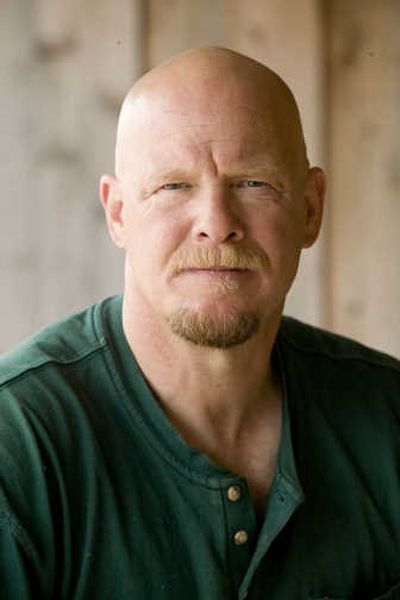Beach likes it ‘Tougher in Alaska’

Watching “Tougher in Alaska,” you might find yourself thinking several things:
•How the tasks (like gold mining, salmon fishing, railroading) aren’t just hard, they’re difficult in ways you never imagined, and being in Alaska makes them even tougher.
•How the people devoted to each pursuit are really good at it.
•How you’re kind of grateful you’re not them.
But the people who do it seem to love it, and to love the vast, untamed frontier embracing them in the 49th state.
Geo Beach, your rough-and-tumble guide for the History Channel series, loves it too.
An Alaskan for a quarter-century, he has been a logger, firefighter and commercial fisherman. He’s at home around construction sites and oil spills.
“That’s how I paid for my writing habit,” says Beach, a former New Englander who in Alaska found a rich source of material for the commentaries and essays he turns out for various publications, Web sites and public radio.
Add to his qualifications the booming voice, chrome dome and overgrown-kid gusto and Beach was a natural to make the jump to TV to showcase the state he calls, with proud accentuation, “uh-LAHHSSSS-kuh.”
This week, Beach joins power company workers as they face fearsome snow loads, high winds and subzero temperatures to keep electricity flowing through lines constantly susceptible to the unforgiving weather.
Among his chores: helping install power poles and string electrical wire by hand in the remote village of Kasigluk, where bucket trucks are unavailable.
Future episodes tackle road building, policing and waste disposal, Alaska style.
“Other shows may be about jobs,” Beach says. “But up here, a job is more than something you clock into at 9 and clock out of at 5. The work is part of a lifestyle and part of a community, of a whole sense of place.”
At each job site, he and a three-person crew “get immersed with the workers in a challenging, awesome environment, working with them.”
To explain, Beach invokes the principle of Venn diagrams: One circle represents the film crew and a second circle the workers being filmed.
At the start of each location shoot, he says, only he occupies the overlapping piece of each circle. But before the shoot is finished, the circles mostly merge with common purpose, as the filmmakers get involved with the action they’re filming, and the workers pitch in with production chores.
“Then, when the cameras go away and viewers click off their TV sets, these guys that I’ve been out with are still toughing it out in Alaska,” Beach says. “And I’m still here, too.”